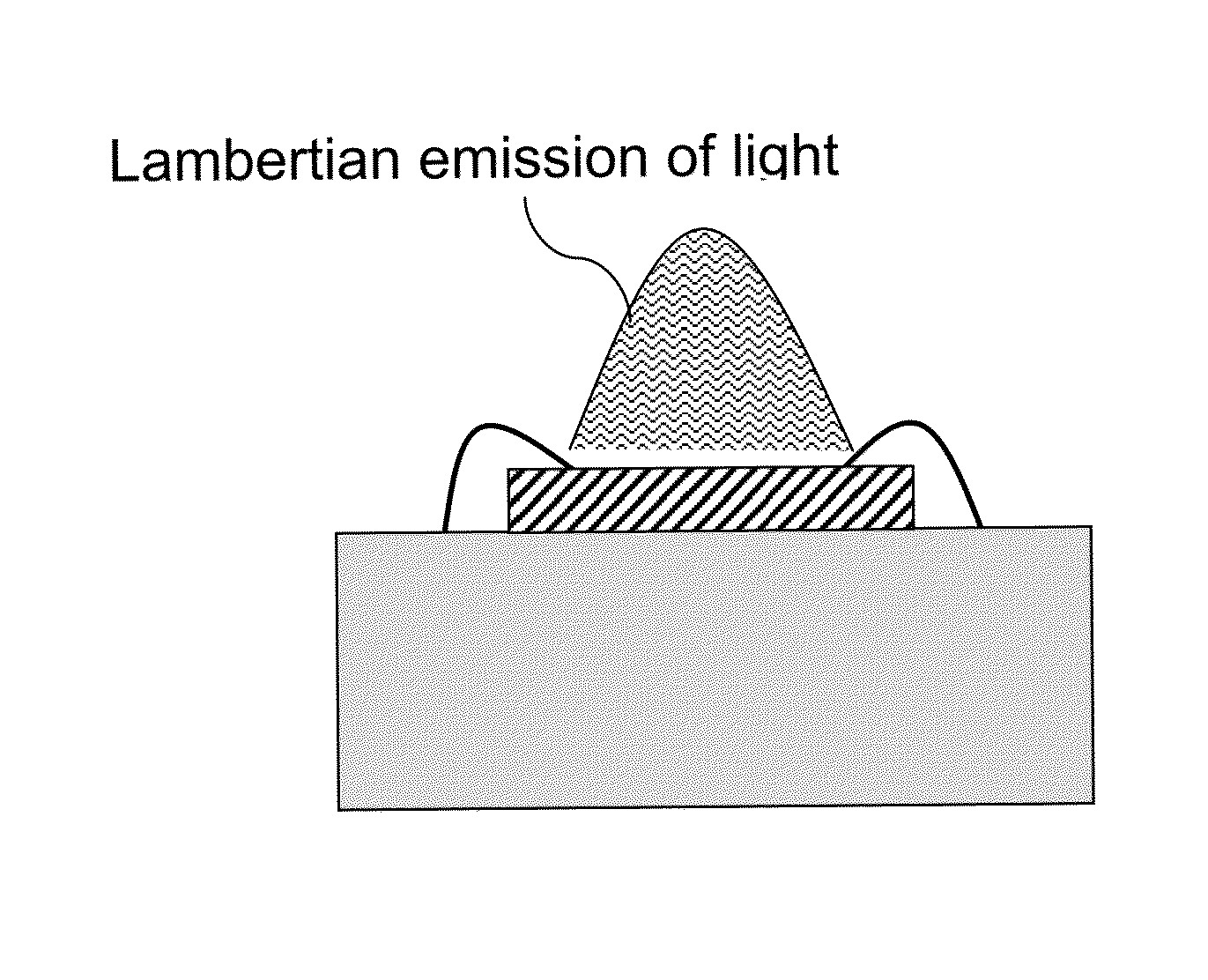LED phosphor ink composition for ink-jet printing
a phosphor ink composition and inkjet printing technology, applied in the direction of biocides, inks, coatings, etc., can solve the problems of unintentionally uneven phosphor distribution, significant variability in phosphor distribution, and relatively difficult dispersibility of silicon, so as to prevent undesirable phosphor settling
- Summary
- Abstract
- Description
- Claims
- Application Information
AI Technical Summary
Benefits of technology
Problems solved by technology
Method used
Image
Examples
example 1
[0020]Example 1 presents phosphor ink compositions according to the present invention.
[0021]
CompositionMaterialRangeclassExamples(weight %)PhosphorYAG: Ce, SrBaSiEu, CaS: Eu, 3-18YAG: Tb, SrS: Eu, SrGa2S4: EuHydroxy-Glycerol 1,3-diglycerolate 1-15functionaldiacrylate, Sartomer CN132,acrylicCN120, CN133monomerPhotoinitiatorIrgacure 819DW, 29590.05-1.0 Epoxy CureKing Industries CXC1615,0.05-1.0 Cat.1735, 1612EpoxyGlycerol triglycidylether 2-15monomerHumectantsGlycerol, Dipropylene glycol,10-30diethylene glycol, ethylene glycolCosolventsGamma-Butyrolactone, N-Methyl-10-30pyrrolidone, N-vinylpyrrolidinone*,n-vinyl caprolactam*, n-vinylacetamide*BiocideProxel GXC0.1-1.0SurfactantsSilwet 7001, 7230, 76050.05-3 Water30-80*Reactive diluents
PUM
| Property | Measurement | Unit |
|---|---|---|
| viscosity | aaaaa | aaaaa |
| thick | aaaaa | aaaaa |
| thickness | aaaaa | aaaaa |
Abstract
Description
Claims
Application Information
 Login to View More
Login to View More - R&D
- Intellectual Property
- Life Sciences
- Materials
- Tech Scout
- Unparalleled Data Quality
- Higher Quality Content
- 60% Fewer Hallucinations
Browse by: Latest US Patents, China's latest patents, Technical Efficacy Thesaurus, Application Domain, Technology Topic, Popular Technical Reports.
© 2025 PatSnap. All rights reserved.Legal|Privacy policy|Modern Slavery Act Transparency Statement|Sitemap|About US| Contact US: help@patsnap.com


